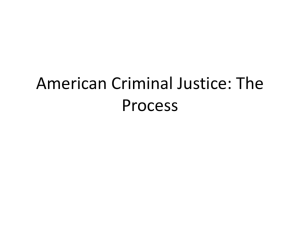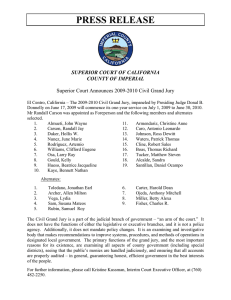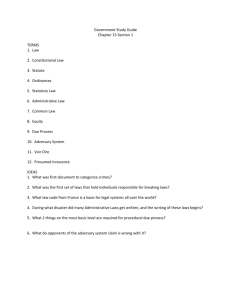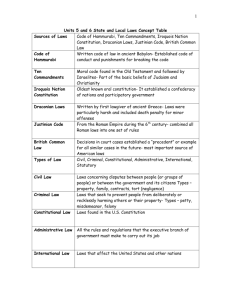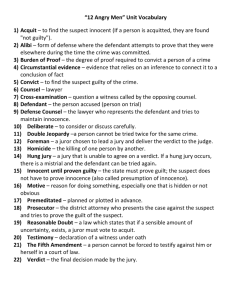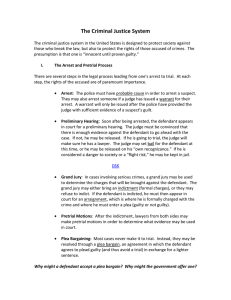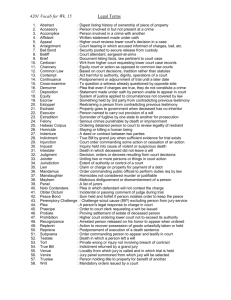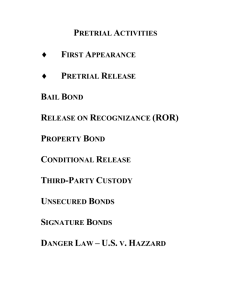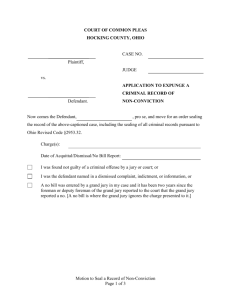chapter 13 (cont)
advertisement
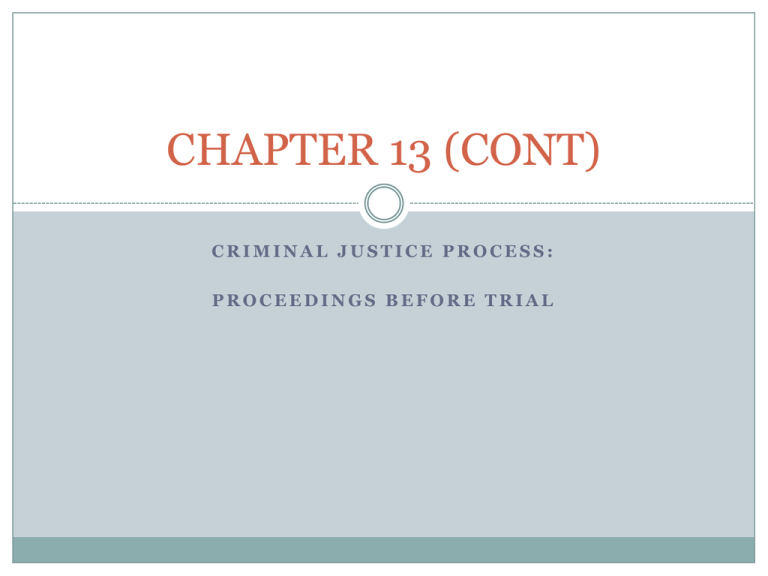
CHAPTER 13 (CONT) CRIMINAL JUSTICE PROCESS: PROCEEDINGS BEFORE TRIAL INFORMATION Proceed to trial for misdemeanor on prosecutor’s information Details nature and circumstances of the charge Filed with court No preliminary hearing or grand jury Based on info collected by prosecutor during investigation PRELIMINARY HEARING Screening device Is there enough evidence to require defendant to stand trial Crime probably committed and defendant probably did it If judge finds no probable cause, case may be dismissed May still submit case to grand jury for further review GRAND JURY 16-23 people who determine if sufficient cause to believe that a person has committed a crime and should stand trial 5th Amendment requires grand jury indictment before can proceed to trial for serious crime in federal court Presents evidence that crime committed and probable cause that defendant committed it GRAND JURY (CONT) Neither defendant nor his attorney have right to appear at grand jury No judge; no rules of evidence Not required to present all evidence or witnesses FELONY ARRAIGNMENT AND PLEAS After indictment, required to appear and enter plea If plead guilty: set date for sentencing If plead not guilty: set date for trial and whether jury or non jury Nolo contendre: don’t admit guilt but don’t contest charges Cannot be used at a later civil trial for damages PRE-TRIAL MOTIONS Motion is formal request that court make a ruling or take action Motion to dismiss the case or seek advantage MOTION FOR DISCOVERY OF EVIDENCE Examine, before trial, evidence in possession of D.A. MOTION FOR A CONTINUANCE Seeks more time MOTION FOR CHANGE OF VENUE Change location to avoid community hostility, convenience of witnesses MOTION TO SUPRESS EVIDENCE Request certain evidence not to be allowed to be presented PRE-TRIAL MOTIONS (CONT) Exclusionary rule gives teeth to 4th amendment Evidence illegally seized can’t be used to convict Defendant at trial Includes evidence gained from illegally questionning File Motion to Supress Extended to state courts by Mapp v. Ohio Two arguments in support of rule: 1. Judicial Integrity 2. Deterrence GOOD FAITH EXCEPTION: does not apply to bar evidence obtained by police acting in reasonable reliance on a search warrant, issued by a detached and neutral magistrate, that is later found to be invalid PLEA BARGAINING Involves granting certain concessions to defendant in exchange for plea of guilty Less serious charge, recommend lighter sentence Judge decides if made freely, voluntarily and with knowledge of all the facts

